Thoracic spondylolisthesis is observed infrequently, when compared with the prevalence of diseases such as sclerosis of the lower back and neck. Chest bone tumors have certain symptoms and require appropriate therapy, just like any other disease.
The thoracic region is characterized by a special structure: it consists of more discs than the sum of the lumbar and cervical regions, and its discs are smaller and very thin. The mobility of this part is very low, and most of the load falls on the sternum and ribs.
The occurrence of pain of varying degrees with heavy lifting or with sudden movements, as is often the case with lumbar or cervical osteochondrosis, was not observed at all, while the variablesEvidence related to suspected development of cardiovascular disease or respiratory dysfunction becomes paramount.
The reasons

Essentially, thoracic osteonecrosis begins to develop as a result of physical inactivity, i. e. a lack of muscle tension, which causes increased stress on the discs located between the vertebrae.
Tumors of the thoracic spine can cause the following conditions:
- The presence of bad habits;
- Scoliosis and uneven posture;
- genetic factors;
- lack of mobility;
- Regular heavy physical activity;
- Received a spinal injury;
- Great stress and mental stress.
The discs of the thoracic vertebrae are affected by both increased levels of physical activity and physical inactivity.
Symptom
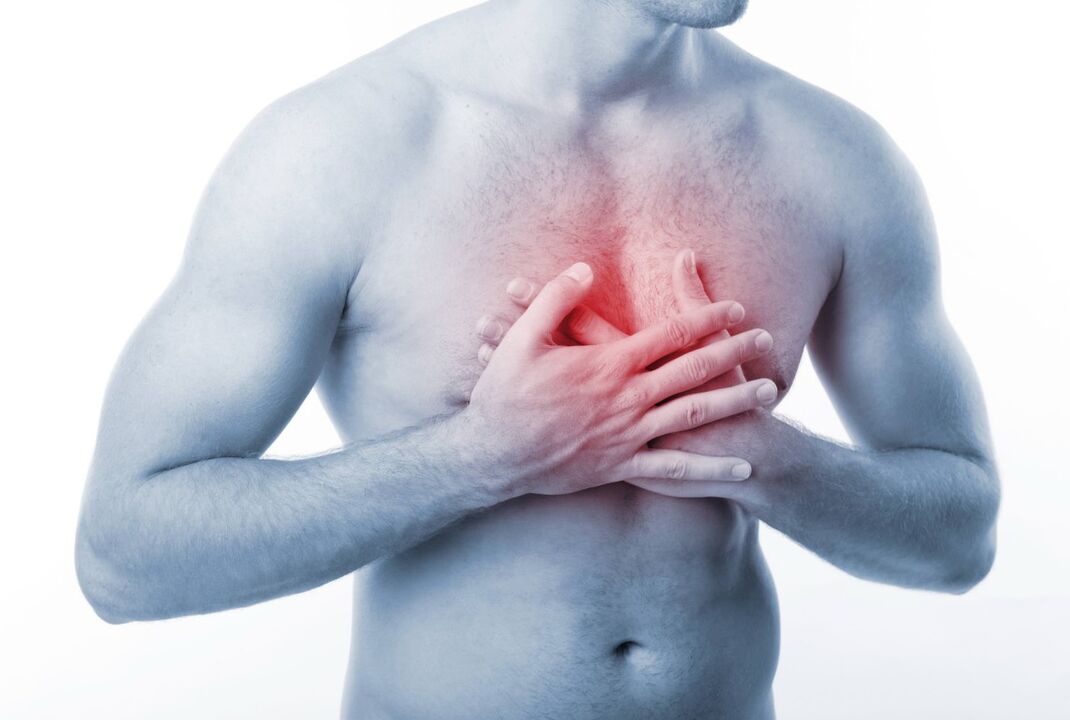
In the case of developing osteonecrosis of the thoracic region, its symptoms manifest themselves quite clearly. Treatment in such cases should be started immediately. Symptoms of the disease are:
- The presence of acute pain in the thoracic spine, which occurs after a long time in one position. Pain is also present with sudden movements and from lifting heavy objects.
- There is pressure in both the back and chest. Thoracic osteonecrosis causes shortness of breath - pain is felt on a deep inhale/exhalation.
- With thoracic spondylosis, there is a symptom such as numbness in certain areas of the body. This is appropriate due to damage to the nerve roots emerging from the spinal cord.
- If a person has osteonecrosis in the thoracic region, he or she is unable to forcefully rotate the body, or extend the arm and lift it. All such actions are very painful.
- The presence of dull pains in the shoulder blades (most often between them).
- Feet are often cold, due to insufficient blood supply to them due to violation of some bodily functions.
- Having chills and "goosebumps".
Symptoms of osteonecrosis of the chest are determined by the degree of neglect of the disease. In addition, such a disease can lead to a disruption of the functioning of other systems in the human body. Therefore, osteonecrosis is sometimes also manifested by the following symptoms:
- Presence of intercostal neuralgia;
- Burning/itching sensation on the feet;
- bloating, constipation or diarrhea, nausea/burping;
- Due to a violation of the function of blood vessels, the skin begins to peel, and the nails become thin and brittle;
- There are difficulties in the work of the reproductive / reproductive system;
- Sometimes there is a noticeable lack of oxygen.
With thoracic osteonecrosis, acute and persistent pain is appropriate, presenting in episodes. In the case of an exacerbation of the disease, the symptoms become extremely bright. At this time, the discs are under heavy pressure. In most cases, the patient is given a hospital protocol. In addition, a person has the following symptoms:
- pancreatitis;
- Urinary stones;
- cholecystitis.
It is important to note that thoracic osteonecrosis does not decrease or increase body temperature.
Dorsago and back pain
There are often signs of thoracic osteonecrosis such as vertebral syndrome, including: back pain and low back pain.
Doraso is known as acute pain in the thoracic spine that comes on suddenly. As a rule, such a pathology is faced by people who have to stay in the same position for a long time, such as sitting. Usually, this sensation creates itself when a person gets up from a table after working for a long time in an unchanged body position. Dorsago pain is sometimes unbearable. It happens that the mobility in the spinal/cervical region is limited.
For back pain, the development of this syndrome does not happen immediately, but takes several weeks. Back pain is characterized by the presence of mild pain and discomfort in the affected part of the spine. Pain increases if you take a deep breath and lean to the sides or forward.
Muscle tissue tension occurs, and in addition, there are limitations to movements in the spinal/cervical regions. As a rule, the pain becomes very strong in the evening, and in the morning all painful sensations disappear on their own if you walk for 10 minutes.
What other pain syndromes exist in thoracic osteonecrosis?
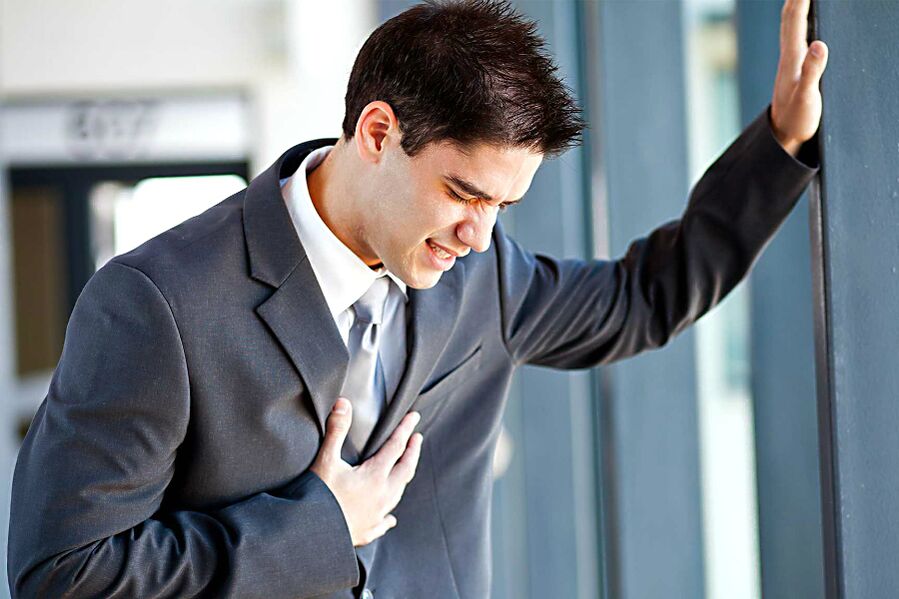
Such an illness can also have other pain syndromes that can complicate an accurate diagnosis. Pain from thoracic cyst in the esophagus, pharynx, and a feeling of "clumping in the throat" if the disease has crossed the upper part of the ribcage. Fibrosis affecting the mid-thoracic segment causes discomfort under the right sternocleidomastoid muscle.
If the disease affects the lower thoracic region, pain is observed in the abdominal cavity, very similar to the sensation that occurs with intestinal pathology.
It should be noted that any relationship between the occurrence of pain in thoracic osteonecrosis and the quality level of the food consumed and the human diet cannot be traced. Also, the occurrence of pain has nothing to do with the time of year. But the pain from osteonecrosis of the thoracic region may increase near night and after heavy exertion. In the morning, as usual, all unpleasant sensations are gone or completely reduced.
Complications

Thoracic fibroids are dangerous because they are difficult to diagnose. For a long time, it was possible to completely treat angina or respiratory diseases without suspecting the presence of this unpleasant disease.
If we continue to talk about the complications caused by osteonecrosis of the thoracic region, then over time, developing, this disease can cause the appearance of various problems affecting internal organs.
The most common complication can be called a disease related to the cardiovascular system. Such problems arise due to stimulation of receptors in the chest and cervical area.
Sometimes observed:
- Dysfunction of the duodenum;
- Digestive tract disorders;
- There is such a pathology as dyskinesia of the gallbladder.
Is there a need to justify the importance of prompt initiation of treatment for thoracic osteonecrosis?
Diagnostic measures
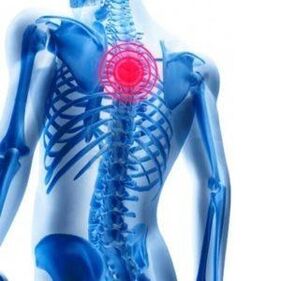
The thoracic region should begin to be treated after a thorough examination of the patient. It includes the following procedures:
- The patient is examined, and all his observations of the course of the disease are recorded. If the disease reaches stage 2-3, the skeleton is clearly deformed. The physician is obliged to review the patient's medical history in order to exclude/confirm genetic factors for the development of osteonecrosis of the chest.
- It is necessary to pass urine and blood for analysis.
- X-rays may be used to determine:
- Presence and size of osteoblasts;
- Determines the height/contour of the intervertebral discs.
- Size/location of the hernia;
- The presence of changes in the shape of the disc.
- The disc technique will provide the opportunity to examine the outer contours of the pulp nucleus. This procedure uses contrast.
- CT scan. This study is extremely rarely used, because during this study, patients are heavily irradiated.
- ECG. Because the symptoms of thoracic lipoma are similar to those of ischemic heart disease, this study method was used to verify this diagnosis.
Breast treatment
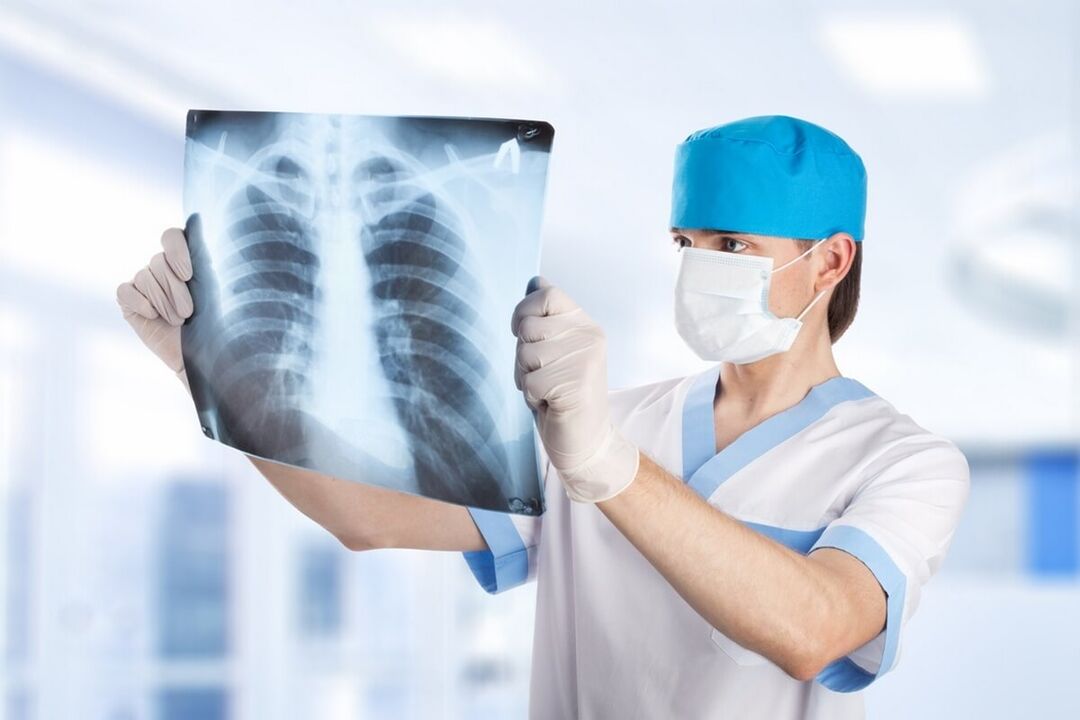
Before organizing the treatment of thoracic osteonecrosis, it is necessary to understand why this disease occurs in principle. In some people, scleroderma is caused by an insufficiently mobile lifestyle, while in others there has been an injury to the spine and, as a result, a disordered blood supply. Therefore, the reasons why the development of such a disease as osteonecrosis of the thoracic region becomes relevant are a very large number.
In any case, effective therapy for thoracic sclerosis includes not only the use of analgesic drugs, designed to relieve pain in the event of an exacerbation of the disease. In addition, it is necessary to determine the cause of the disease. It is necessary to take a serious attitude towards the treatment of this disease.
In addition, the treatment of osteonecrosis of the thoracic region with the help of drugs should be combined with physical therapy, keeping in mind that a small load is beneficial.
Drug treatment

To treat the disease during an exacerbation, it is necessary to adhere to a regime of bed rest, use pain relievers and other drugs that work against this disease.
The drug relieves pain syndrome in the early stages of the development of the disease. Pain relievers and injections relieve moderate pain. Pain relievers are prescribed along with anti-inflammatory drugs, with drugs that restore cartilage tissue.
The choice of drugs, the amount of which is needed to regenerate bone tissue, is made on an individual basis. The physician needs to take into account the organ features and course of the patient's disease in each individual case. Therefore, pharmacological treatment of osteonecrosis of the chest includes the use of the following drugs:
- Analgesics to eliminate acute pain in the chest area, causing malfunctions of the respiratory system and causing a lot of discomfort during movement.
- Tablets relieve muscle spasms.
- Preparations contain a large amount of vitamin B.
- Drugs of natural origin to preserve fluid in the intervertebral disc, which have spread to osteonecrosis.
Effective exercises
People who are facing the problem of osteoporosis in the thoracic region need to perform exercises that have a positive impact on the spine. A streamlined list of simple tasks will help eliminate acute pain. By the way, practicing breathing with such a disease as scleroderma will also bring results and reduce the number of attacks. The following exercises are recommended:
- Plank is a good exercise in case of this disease, and at the same time it is recommended to do this exercise only for no more than 1. 5 minutes with a gradual increase in the load on the thoracic spine.
- Hang on the crossbar as often as possible, then add time to the exercise time.
- In turn, in the "plank" position, you need to press your knees to your chest and stay in this position for a few seconds. Such a precaution is useful for the joints and relieves stress on the chest area in osteosarcoma.
To treat the disease, the best way is to use exercise therapy and other physical therapy methods, and stay in a hospital under the supervision of a doctor. Such exercises do not cause any inconvenience, since the patient performs simple and effective manipulations to remove osteonecrosis of the thoracic region. This therapy is one of the key factors in preventing disease in people at risk.
Manual therapy
The help of a chiropractor in the form of massage for osteonecrosis of any part of the spine will bring greater efficiency and significantly improve the patient's well-being. Such treatment:
- Prevent pain when suffering from back pain;
- Reduces muscle tension.
In addition, manual therapy is an excellent opportunity to normalize total body circulation in the intercostal space, determine proper tissue nourishment, and stimulate better blood oxygen saturation.
In case of gastrointestinal pain (this is also one of the types of pain syndromes), such therapy is also used, but only as prescribed by a doctor.
Massage
Massage is a good therapy for osteonecrosis, even in the hospital, even at home. This process:
- Causes the elimination of the hypertonicity of the back muscles;
- Helps strengthen the organs of the intervertebral disc.
If massage is part of general therapy against osteonecrosis, it can bring about a significantly closer time to complete recovery, if the patient's diagnosis is acute osteonecrosis of the region. chest. Often, a variety of massage therapies are recommended concurrently with chiropractic treatment combined with therapeutic physical activity.
What to do if thoracic gangrene is inflamed?
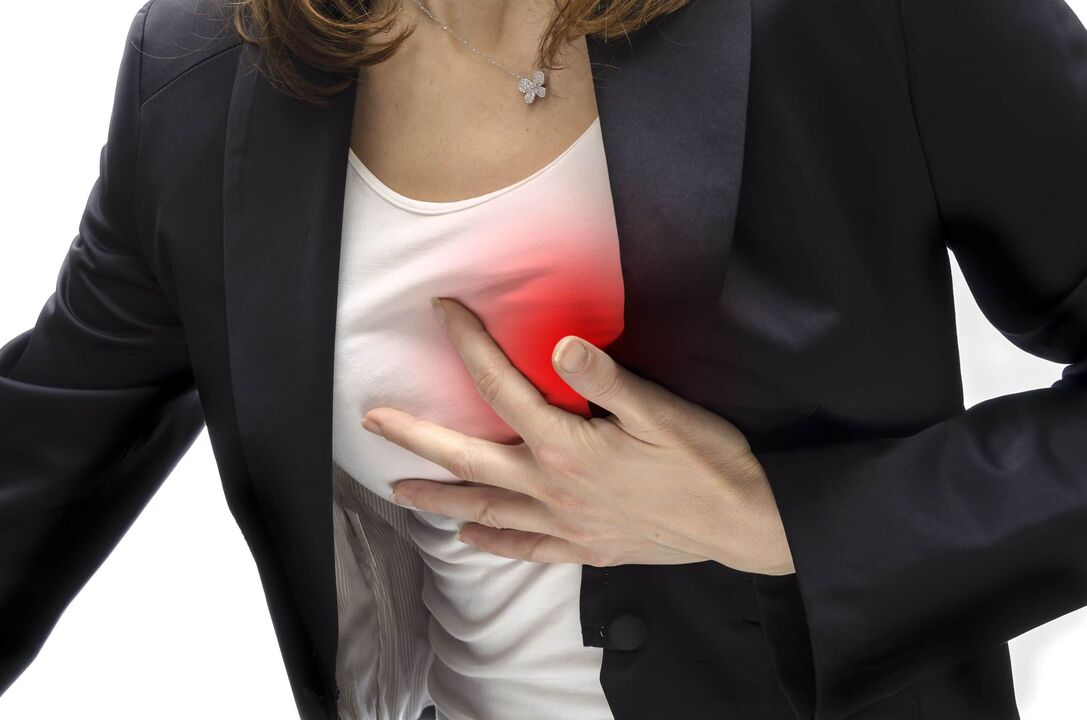
An exacerbation of osteonecrosis can cause physical overload (playing sports, strenuous work), hypothermia, severe stress or fatigue, and heavy lifting.
In the case of an exacerbation of scleroderma, a person feels unbearable pain, which is impractical to get rid of at home with the help of painkillers. For this reason, in such cases, it is necessary to call an ambulance.
If the pain is not too strong and tolerable, then the use of analgesics is undesirable, as this complicates the doctor's task in making a proper diagnosis. With osteonecrosis of the thoracic region, you can not self-medicate - it will be dangerous to health.
Often fibrosis will progress to the following acute stage:
- stressful situations;
- Excessive physical exertion;
- Hypothermia.

In order to eliminate the exacerbation of osteonecrosis as quickly as possible, you should listen to the following recommendations:
- The patient should adhere to bed rest (as far as possible, avoid any movement);
- It is best to follow a comprehensive diet and eat right;
- The postures that the patient takes should not provoke the appearance of pain in him;
- Need to use drugs: analgesics and antispasmodics;
- It will not be superfluous to perform physiotherapeutic manipulations;
- Exercise therapy is of great importance in the treatment of thoracic osteonecrosis. Of course, all exercises must be performed with extreme caution.
Prevent
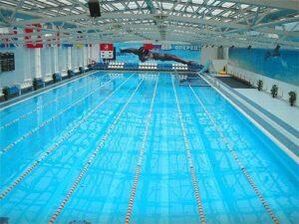
To prevent the occurrence of diseases of the spine (bone necrosis of various parts), you should note the following tips:
- Do not sit still: sign up for a swim, arrange a morning jog, warm up your muscles;
- If during work (for example, you work in an office) you are in a position, then try to keep your back straight and shoulders relaxed;
- Working while sitting should be entirely in a chair that supports the spine;
- Buy an orthopedic pillow and mattress - so, during sleep, the spine will have the correct position;
- Do not carry heavy objects, and if necessary, do not lift them suddenly;
- Pump your abs;
- Your shoes must not be uncomfortable to wear;
- Implement your diet in a way that includes as many useful trace elements as possible and is fortified.
No one is protected from the occurrence of such a disease as osteonecrosis of the chest. If you suddenly notice the appearance of the first manifestations of the disease, then you should immediately see a doctor - after all, it is easier to prevent osteonecrosis than to treat it for a long timeafterward.
If you follow all the above recommendations, then the chances of encountering this disease are minimal.
Extra tips
It is clear that in order to avoid any problems with the spine, it is necessary to strictly follow the recommendations regarding a healthy lifestyle.
If your job is sedentary, take breaks every hour and restart if possible. Very effective in preventing osteonecrosis of the swimming thoracic region. A balanced diet will not be superfluous.

It is recommended to exercise in the morning and play sports in the daily free time for prevention purposes.
In essence, thoracic osteonecrosis is not dangerous, but it can bring dangerous complications if you don't treat it. It is important to organize the treatment of osteonecrosis in a timely manner to avoid further problems with the spine in the future, because in our body all systems and organs are interconnected - let'sremember this.
Each person wants to live pain-free, not limiting himself to anything due to having any disease. Therefore, it is important to identify osteonecrosis promptly and treat it if the problem still surprises you.
Many people who have had thoracic osteonecrosis, who reacted to the disease at the right time and after performing the treatment, have forgotten what osteonecrosis is and its symptoms. Don't wait any longer!
And it is better to prevent the occurrence of this disease. Just lead an active lifestyle!







































